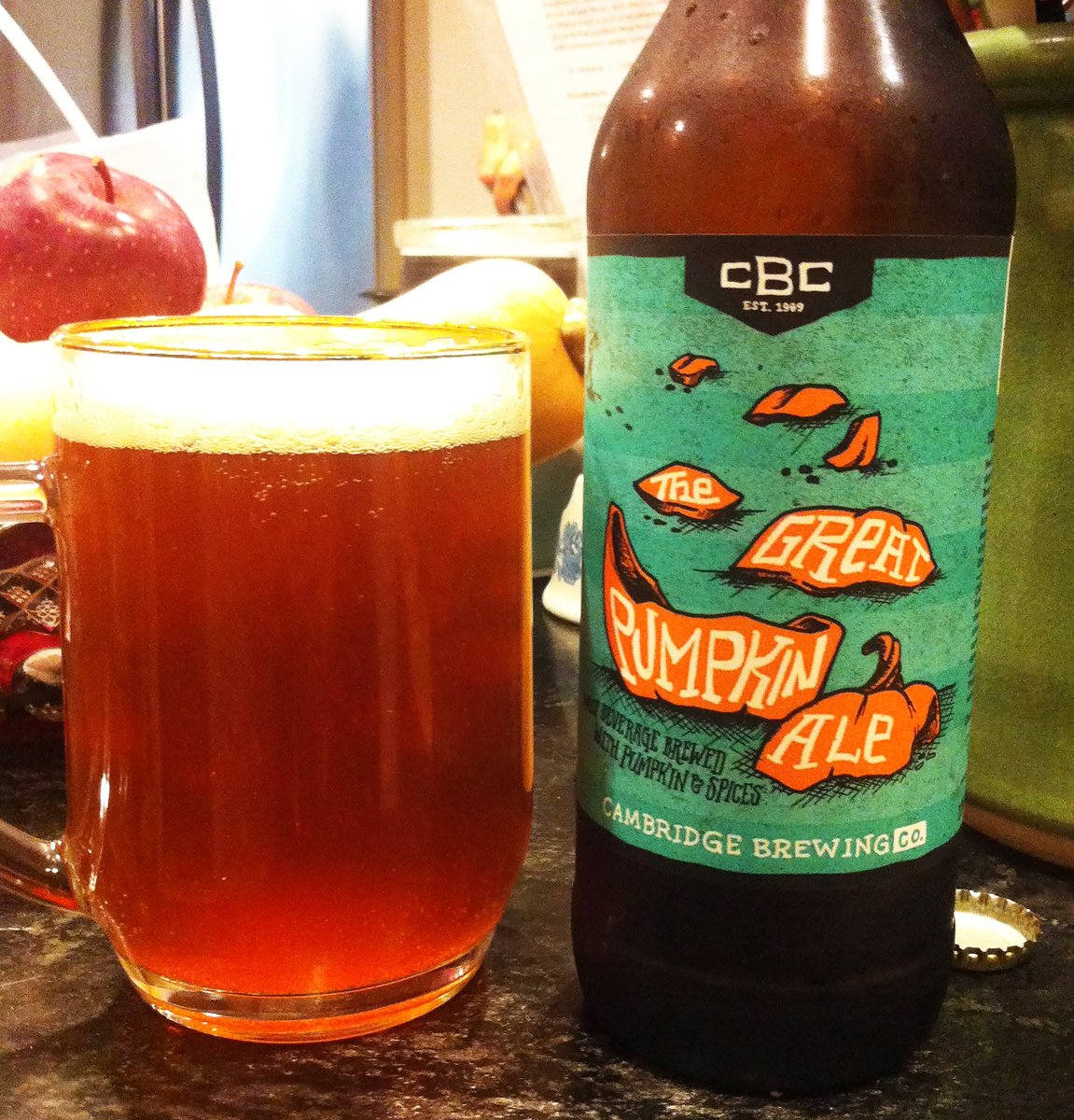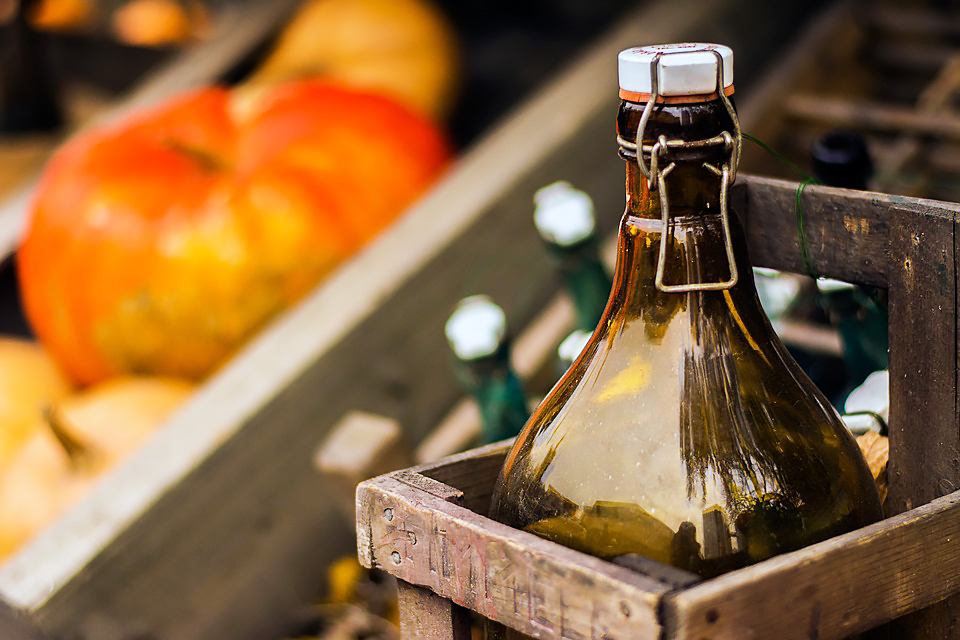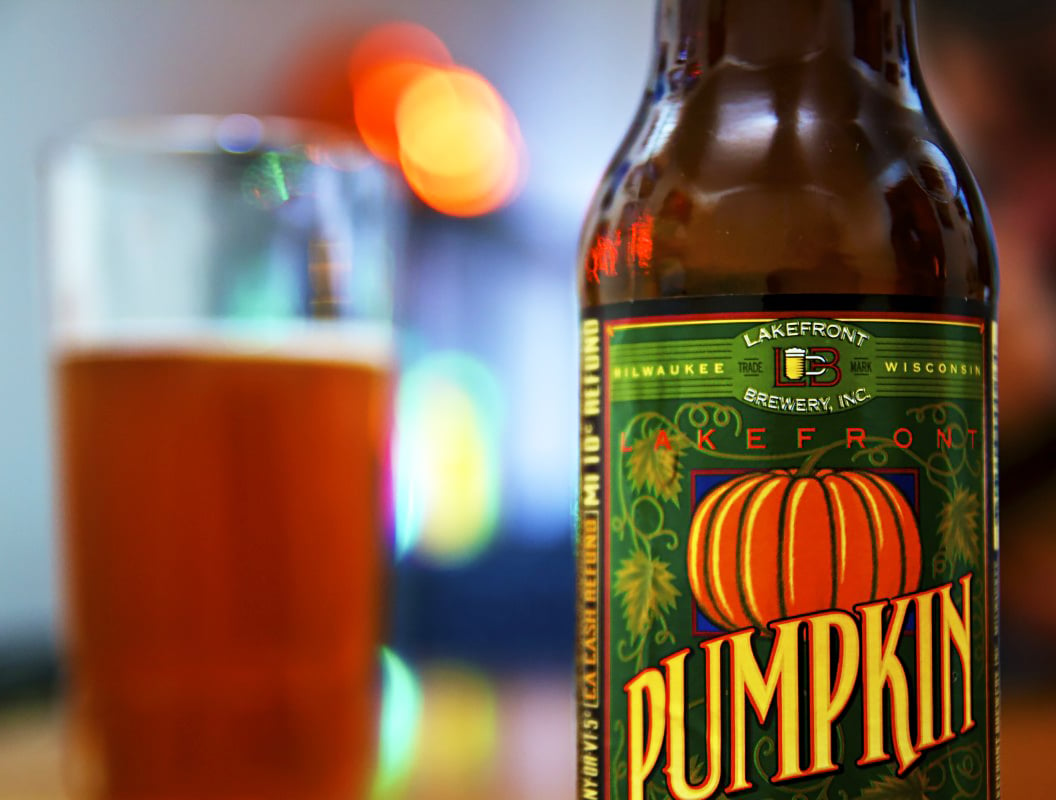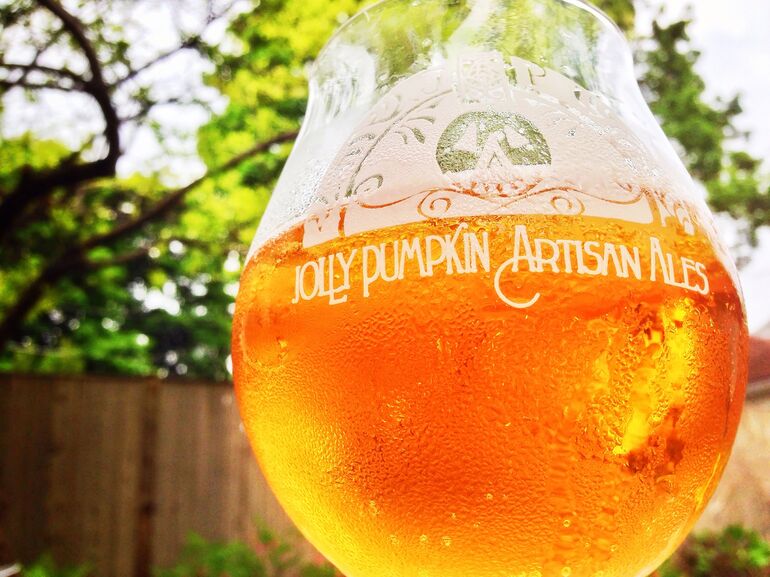Start 14-Day Trial Subscription
*No credit card required

The Pros and Cons of Pumpkin Beer
If you were looking to start a craft beer bar brawl and could only ask one question, you could do a lot worse than, “So, how about those pumpkin beers?”
Pumpkin beers are an unexpected hot-button topic, pitting beer lover against beer lover. This controversy is even more strange when we consider that, when it comes to pumpkin beers, there isn’t even a “standard” beer that we’re all fighting over: their vital stats, flavors and ingredients vary wildly from beer to beer. In the hope of bringing some level-headed rationality to this emotional debate, our goals today are to first (briefly) discuss the origins and evolution of the pumpkin beer, and then evaluate some of the pros and cons of this controversial, gourd-inspired (if not always gourd-infused) beer. ‘Tis the season, after all!
A Brief History of Pumpkin Beer
Where did pumpkin beer come from, anyway? The short answer is that it originated as a colonial American beverage, mashed, brewed and fermented more or less like the barley ales of the era. Its genesis had less to do with the quality of the product than its ubiquity: pumpkins grew everywhere, whereas good grains were harder to cultivate and also costlier. Once agriculture in the New World really took off, pumpkins took a back seat to better candidates for fermentation, but nostalgia and history converted the humble pumpkin into something of a folk hero, reminiscent of both a simpler time and our pioneer spirit.
Still, modern breweries didn’t start producing pumpkin beers until the 1980s, when Buffalo Bill’s Brewery in California produced one spiked with pumpkin pie spices (since, after all, pumpkins don’t really taste like much of anything). Other craft breweries followed suit, and today stalwarts like Dogfish Head Punkin Ale and Southern Tier Pumking are joined by examples from dozens of other breweries, both small and large. These pumpkin beers are more accurately described as pumpkin pie spice beers, however. Few resemble the colonial versions and many (most?) don’t actually use pumpkin, either because there’s little obvious flavor benefit or the rush to get them onto the shelves means that they need to be brewed before pumpkins are actually in-season.

Photo Courtesy Flickr/Rudi Riet
The Good
Pumpkin beers are good. Not all of them, of course, because you’ll never get universally good quality in any product, but they’re not intrinsically challenging or an acquired taste like, for example, a Kimchi California Common (true story – I’ve had one). And breweries tend to make them well: an audit of reviews on beer rating websites (including right here at The Beer Connoisseur) shows not only a number of highly-recommended examples but robust average scores by beer drinkers, despite the pumpkin beer pushback that we’ll discuss in a moment. I defy anyone to drink Pinchy Jeek Barl by Anderson Valley or The Greater Pumpkin by Heavy Seas or Warlock from Southern Tier and tell me that these aren’t interesting, flavorful, high-quality beers.
Pumpkin beers are also evocative. The aromas of cinnamon, nutmeg, clove, vanilla and more are olfactory triggers for the same kind of nostalgia and romanticism that made the pumpkin a central figure in the autumn holiday season in the first place. If you’re a fan of cooler weather, the smell of dried leaves and crackling fires, then a pumpkin beer is perfect for you and will call all of those and more to mind, even if you’re drinking it in late August!
It’s also somewhat unfair to claim that pumpkins have no flavor. There are a wide variety of pumpkins and fall squashes, and when properly treated and added as an ingredient they can increase body, impart nutty and earthy flavors, and if caramelized or mashed, can add the same kinds of rich melanoidin flavors and/or fermentable sugars that we get from other brewing ingredients. Yes, the flavors are subtle, but so is the flavor of Pilsner malt and a wide range of noble hops, and I don’t see anyone arguing that Munich Helles is a waste of time.

The Bad
The case for the prosecution here is circumstantial but robust. First, opponents argue, pumpkin beers aren’t pumpkin beers. A great many use precisely zero pumpkin or squash or gourd of any kind in their creation, and are instead simply spiced beers. This is something of a flavor profile bait-and-switch, and not always an effective one: there are a lot of bad pumpkin beers out there. Breweries feel pressure to produce a pumpkin beer to get onto crowded taps in the fall, and many are producing beers of mixed-to-low quality either out of a lack of familiarity or lack of interest with the style. Even those using real pumpkin can struggle to balance fruit and spice and beer style (as some of our judges have found out the hard way).
Then there’s the question of timing. Most pumpkin beers hit the shelves in late August, which is hardly autumnal. The “creep” caused by wanting to be first on the shelves pushes some breweries to move even further back into summer, exacerbating the misfit of the beers to the season. By the time we get to cool air and Halloween costumes and Thanksgiving, pumpkin beers that have been on the market since late summer can be an oxidized, stale mess.
In short, pumpkin beers are the holiday fruitcake of the beer world: rarely fresh, and often not worth consuming even when they are.
The Verdict
So, on the one hand we have a nostalgic, high-quality beer that makes use of a subtle and interesting brewing ingredient; on the other, we have a mixed bag of stale beers that are selling drinkers an empty hay cart of lies. The decision is, of course, each of ours, but I’ll weigh in here with one opinion among many.
For all of their challenges – recipe, production and timing – I still argue that pumpkin beers are a valuable addition to the beer year. It is inaccurate to argue that the faults noted above are universal, and it is perfectly possible to find fresh examples of this style that use pumpkin in productive and delicious ways. The responsibility for doing so – and therefore driving the bad/dishonest “pumpkin” beer producers to improve or get out of the market – lies with us as beer drinkers. A touch of due diligence and care in selecting which pumpkin beers we drink is the secret ingredient to good pumpkin beers.
The defense rests.





Comments